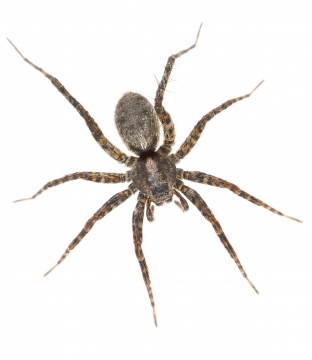Summary for Pardosa prativaga (Araneae)
previous species | next species
National Distribution
Terms of Use. Double-click on map to go to region

Explore Regional Distribution
Please log on and add a note on this species
About this species
Recorded altitude range0m to 610m
Species text
DistributionThe species is widespread in the southern half of Britain, with very scattered records further north. It is widespread in north-western and central Europe.
Habitat and ecology
P. prativaga occurs on open ground and herbage in various open habitats including grasslands, waste ground, fields, heathland, woodland clearings, dunes, old quarries and roadside verges as well as in wet places such as dyke edges, fens, marshes and bogs. At Braunton Burrows in Devon, the species has been recorded across the dune system from the seaward mobile dunes, through the dune slacks to the landward heathy area with bracken (Merrett 1967b). The genitalia are quite distinct from Pardosa pullata, yet inter-specific copulations have been observed and fertile eggs sometimes result. This has only been seen with specimens in captivity, but it has been suggested that if this also happened in nature it could explain the fact that specimens are sometimes captured with the sexual organs of one but with the colouration approaching that of the other (Locket & Millidge 1951). The spider is adult mainly in early to mid-summer.
Status
The spider may be abundant locally, but is scarce in northern Britain.
Original author of profile: D.R. Nellist
Text based on Harvey, P.R., Nellist, D.R. & Telfer, M.G. (eds) 2002. Provisional atlas of British spiders (Arachnida, Araneae), Volumes 1 & 2. Huntingdon: Biological Records Centre. References
Adult Season
Habitats
background methodology
Recorded management for locations with Pardosa prativaga
Recorded substrate and hydrology for locations with Pardosa prativaga
Images
please log on and upload a new image for this speciesSee also A-Z Species Index - A-Z Picture Index - previous species | next species




